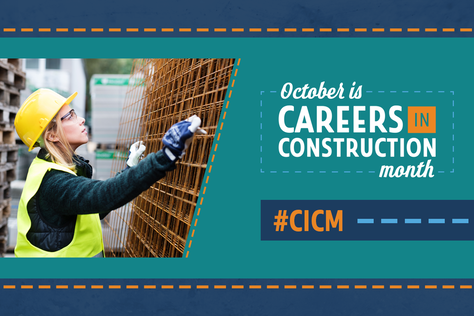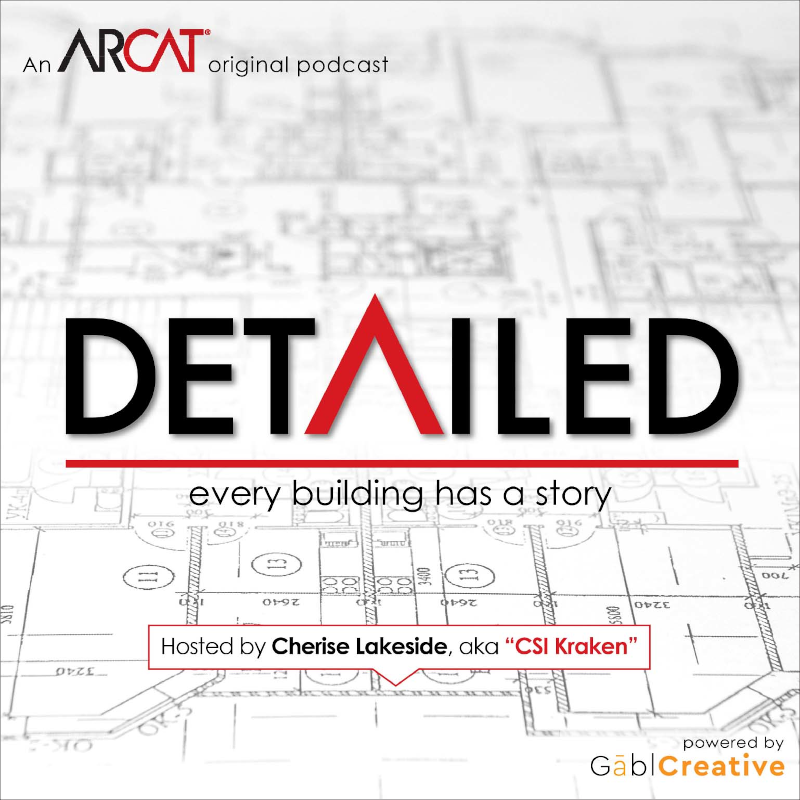|
Contributed by James Aiken (Editor's Note: October is Careers in Construction Month, an annual month-long celebration of craft professionals and the career opportunities in the construction industry.)
You’ve probably heard by now about record low unemployment. Simply posting a job description on a job board or in the newspaper doesn’t always cut it. Especially when you’re looking for a stable, long-term hire. The reason is - firms are still using the standard recruiting strategy to pursue a market of candidates that is perpetually shrinking. . . When unemployment is high, the job boards are poppin’. It seems like just about everyone is willing to check out new opportunities. But what should firms do when that strategy doesn’t work anymore? It’s simple - and treading lightly as to not get too political but... “If you like your recruiting strategy, you can keep your recruiting strategy!” Having an active candidate strategy works sometimes. There's no need to throw out the baby with the bathwater. What isn’t being addressed (most of the time) is a passive candidate attraction strategy. Firms want to hire associates who are high performers. Candidates who are happy, and successful in their current role. The disconnect is that they typically are not changing their recruiting process. They simply forward the job description to these candidates. Here’s the problem with that; happy people don’t move so easy. Here’s the solution: create a candidate acquisition process that specifically targets passive candidates. Passive candidates take a bit more “warming up”. Job boards are like speed dating. Everyone knows whats up and you can usually screen people out fairly quickly. Everyone is looking for volume. Recruiting passive candidates is like (gasp) picking up an attractive person at a bar. You wouldn’t walk up, introduce yourself, then immediately ask for a phone number, would you? Maybe some of you extra attractive people would - but it never worked for me! We need to “warm up” the candidates.
0 Comments
Contributed by Eric D. Lussier I feel extremely fortunate to live just next door to Burlington, Vermont, in a fantastic little town called Colchester. How next door? I live just six miles from Burlington's City Hall.
For those that have visited Burlington, you know just how special of a city it is. And for all of those that I've talked to that have never visited Burlington, they've heard what you've probably heard. It's beautiful, it's the home of Bernie and Ben and Jerry's and Phish, it's also very left-leaning and it's on the list to visit some day. Little ol' Burlington, population 42,239 as of 2017, happens to be the first city in the nation to source all energy from renewable sources in 2014. And just two weeks ago, our Mayor, Miro Weinberger, announced a plan to make Burlington a net zero energy city by 2030. In doing so, he said “I know that many Burlingtonians believe, as I do, that we are in a climate emergency, and at the same time, that it can feel tough to know how to respond to the scale of this problem. With this roadmap in hand, we now have clear next steps for what we can do to respond at the local level to this global crisis." This roadmap includes four main pathways which include:
Burlington may be ahead of the curve when it comes to this difficult conversation and gameplan that is quickly becoming a global crisis. Climate emergency is a perfect term for what we are experiencing, not only at a local level, but also at a global level. This global crisis is under more of a magnifying glass this week as we celebrate World Green Building Week, which is an annual campaign that motivates and empowers us all to deliver greener buildings. The campaign in 2019 aims to raise greater awareness of the carbon emissions from all stages of a building’s lifecycle, and encourage new practices and new ways of thinking to work towards reducing carbon emissions from buildings. Did you know buildings and construction are responsible for 39% of global energy-related carbon emissions? 28% of these emissions come from the operational "in-use" phase – to heat, power and cool them, while 11% of these emissions are attributed to embodied carbon emissions, which refers to carbon that is released during the construction process and material manufacturing. As part of this 10th annual World Green Building Week, the World Green Building Council has issued a bold new vision for how buildings and infrastructure around the world can reach 40% less embodied carbon emissions by 2030, and achieve 100% net zero emissions buildings by 2050. Burlington may be a few years ahead of the curve, but still needs to hit that goal of 2030. As for you and your firm, what are you doing to ensure we’re building a better future? Contributed by Liz O'Sullivan Purchasing for construction projects isn’t like purchasing in our personal lives.
When we buy things in our personal lives, we go to a store, or go online, find exactly what we want, and buy it. Sometimes we ask someone else to get something for us. The very particular among us might attach a photo of exactly what we want when we send the email or text message request for the item. On construction projects, the architect finds out from the owner the general idea of what is required, then the architect, through the drawings and specifications, tells the general contractor exactly what to provide. OK, so this is complicated, but it still makes sense. What happens next is where it gets weird… The bidding general contractors solicit bids from subcontractors and vendors, each of whom is a specialist in his or her area. These are the people who read the documents and actually provide what the drawings and specifications require, and the general contractor who is awarded the project coordinates all of that work. These bidders may submit bids on the specified items, or may submit substitution requests, requesting that different products be approved by the architect. One time I was talking with a product rep at my CSI Chapter meeting about specifications for toilet partitions and lockers. The rep represents several different manufacturers. She currently has someone working with her who is new to the construction industry. The new person looks at specifications for all projects that have just hit the street, to see if the specs include manufacturers they represent, or products that they might be able to meet the spec for, even if their manufacturers aren’t specifically listed. If their manufacturers aren’t listed, but they can meet the spec, the product rep will prepare a substitution request and submit it to the general contractor for him to submit to the architect, to see if they can get approved, and therefore be able to provide a bid. The new employee described this process as “the strangest way to do business.” It is very odd, from a manufacturer’s or distributor’s point of view. The building owner, through the architect, asks for something specific, or maybe says “provide one of these three” or maybe says “provide this, or something equal.” Then the manufacturer, distributor, or subcontractor goes through a process which looks a bit like begging to be allowed to play, too. This isn’t actually that strange when the documents are clear. Contributed by Russell Harrison In my last blog post we looked at the struggles a product rep has comparing a product that is specified that doesn’t match the drawings. Or, how we compare apples to oranges. In this post, we’re going to take it one level further and look at one small thing that happens at the subcontractor level during the bid phase. Before I go there, I’m going to sidetrack into the glazing side a bit, but we’ll bring it back around to the metal panel industry we spoke about in blog post #1, I promise! In a past life, I was a subcontractor in Oregon working in the commercial glazing realm. We would install anything glazing related in commercial buildings or high-end residences. That could be curtainwalls and storefronts, automatic door entrances, or even vinyl windows. The reason I bring this up is because it gave our team exposure to items from Divisions 5 (Metal), 7 (Thermal and Moisture Protection), or 8 (Openings). As our work was based around Division 8, this forced us to sometimes work with quite a few items outside of our realm of expertise and brought up a lot of questions internally. Anytime we had time to reach out to a rep and discuss the things we didn’t understand, we would do so. However, when our bid lead times were short, we’d have to make a lot of guesses. Guessing isn’t an abnormal occurrence in construction estimating. Unfortunately, it’s quite normal. Controlling the amount of guessing for subcontractors is an area where we can all help. Subcontractors, like most people involved in the commercial construction industry, have to clearly understand the work to bid a project accurately. As product reps, we try to work side by side with our subs to make sure they have all the information they need by the bid date so they can provide a thorough bid, but sometimes things happen outside of our control. A recent item outside of our control, and a very relevant example, would be our white-hot construction market in a booming economy.
During a construction boom, most estimating teams at the subcontractor level are working 60-70 hours a week in an attempt to keep up with the number of projects that are bidding. This doesn’t leave much, if any, time for other daily tasks. Estimators are typically very selective of what they will consider bidding during these times, will only work with general contractors (GC's) they like, will choose to bid jobs that are completely detailed and well specified, or will chose projects that fit into their available labor calendars. |
AboutLet's Fix Construction is an avenue to offer creative solutions, separate myths from facts and erase misconceptions about the architecture, engineering and construction (AEC) industry. Check out Cherise's latest podcast
Get blog post notifications hereArchives
March 2022
Categories
All
|





 RSS Feed
RSS Feed
